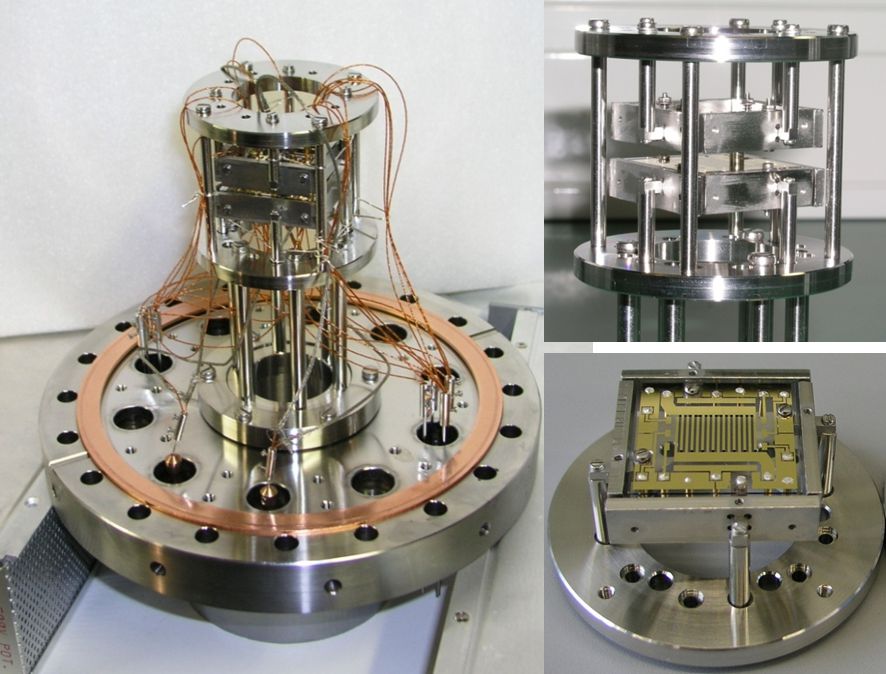Projects
Planar micro ion traps

Project description
The goal of this project was to develop a micro fabricated higher order multipole ion trap. The basic design of the planar ion trap stems from a well known 22-pole ion trap, fabricated with conventional machining methods. The advantage of a multipole design is the large field free trapping region, which is perfectly suited for ion-ion or ion-neutral collision experiments. Microfabrication methods enable a higher degree of freedom over conventional methods in electrode design for ion shifting, manipulation, and extraction, as well as improved accuracy.
Two generations of ion trap design, with 32, respectively 28 comb-like interdigital RF electrodes and rectangular shaped static endcap electrodes are evaporated and patterned with MEMS processes onto an optically transparent Pyrex substrate. Field shaping electrodes on the back side of each chip enable an efficient extraction of ions. Two chips with mirrored electrode design, facing each other, compose the biplanar trap, which thereby provide unmatched optical access to the trapping region. The active electrode area for both designs is 30*30 mm^2.
For the intended use in combination with a magneto optical trap, enabling experiments for ion-neutral collisions using transparent electrodes, an ITO sputtering process has been characterized. The trapping performance of both traps is almost identical with measured lifetimes of 5 to 16 s, depending under the ion species under test.
Start/End of project
01.03.2005 until 28.02.2007
Project manager
Prof. Dr. Peter Woias
Contact person
Dr. Michael Kröner
Phone:0761/203 - 7584
Email:kroener@imtek.de
Partners
Physikalisches Insitut, Uni Freiburg:
Prof. Dr. Matthias Weidemüller, Dr. Roland Wester
Funding
Landesstiftung BaWü
Keywords
Mikro-Ionenfallen, Atom-Molekülreaktionen, Multipolfallen, Planare Ionenfallen, Transparente leitenden Schichten, micro ion traps, ion atom collisions, multipole ion traps, transparent conductive electrodes

